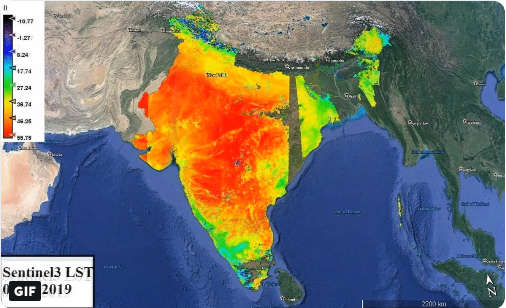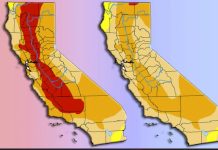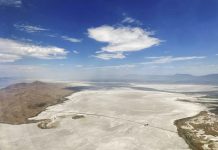Dozens of people are reported to have died in a heatwave across India that has seen temperatures reaching more than 50°C (122°F).
This has culminated with Delhi, a city of 26 million, experiencing its all-time highest temperature on Monday at 48ºC (118ºF), still easily lethal if, like most of India’s population, you lack access to air conditioning.

Scorching temperatures and water shortages have caused heavy casualties, including dozens of deaths by sunstroke and other heat-related causes. Indian media said on Friday that 17 people had died in three weeks.
On June 1, the thermometer hit 50.3ºC (123ºF) in Churu, West Rajasthan. Two days later the same station exceeded 50ºC again. This fell just 0.2ºC (0.4ºF) short of the all-time Indian record, set in 2016. The country is still under a severe heat warning.
Meteorological Department officials issued an extreme weather event warning as the “severe heatwave” continued in northern and central areas for a third day in a row.
Hospitals have issued emergency wards with extra air conditioners, coolers and medicines, said Ramratan Sonkariya, an additional district magistrate. Water is being poured on roads in Churu, known as “the gateway to the Thar Desert”, to keep the temperature down and prevent them from melting, he said.
Water supplies are drying up
The heat is a product of the late arrival of the monsoon – and probably also of human pollution. By this point in the year, southern and central India should be feeling the soothing effects of moist winds, but so far only small pockets have gained relief.
The late monsoon doesn’t just pose a threat in terms of heat. it also means lower rainfall…. And water supplies are drying up. There are even reports of stabbings as people (and animals) fight for water, and this season’s rainfall is expected to be low.
In the western-central state of Maharashtra, farmers struggled to find water for thirsty animals and crops. “We have to source water tankers from nearby villages as water reserves, lakes and rivers have dried up,” said Rajesh Chandrakant, from Beed, one of the worst-hit districts. “Farmers only get water every three days for their livestock.”
Actions plan…
Some Indian cities, led by Ahmedabad, have developed heat action plans, providing warning alerts, changing working hours when heat waves strike, and adjusting urban architecture so more heat is reflected and less absorbed.
Of the 15 hottest places in the world on Sunday-Monday, eight were in India and the others in neighbouring Pakistan. In May 2016, Phalodi in Rajasthan recorded India’s highest ever temperature, of 51°C. The three-month pre-monsoon season, which ended on May 31, was the second-driest in the past 65 years. Monsoon rains bringing down the heat are due to begin on the southern coast later this week.
[IMD.GOV.IN, Indipendent, weather.com, NRDC]












